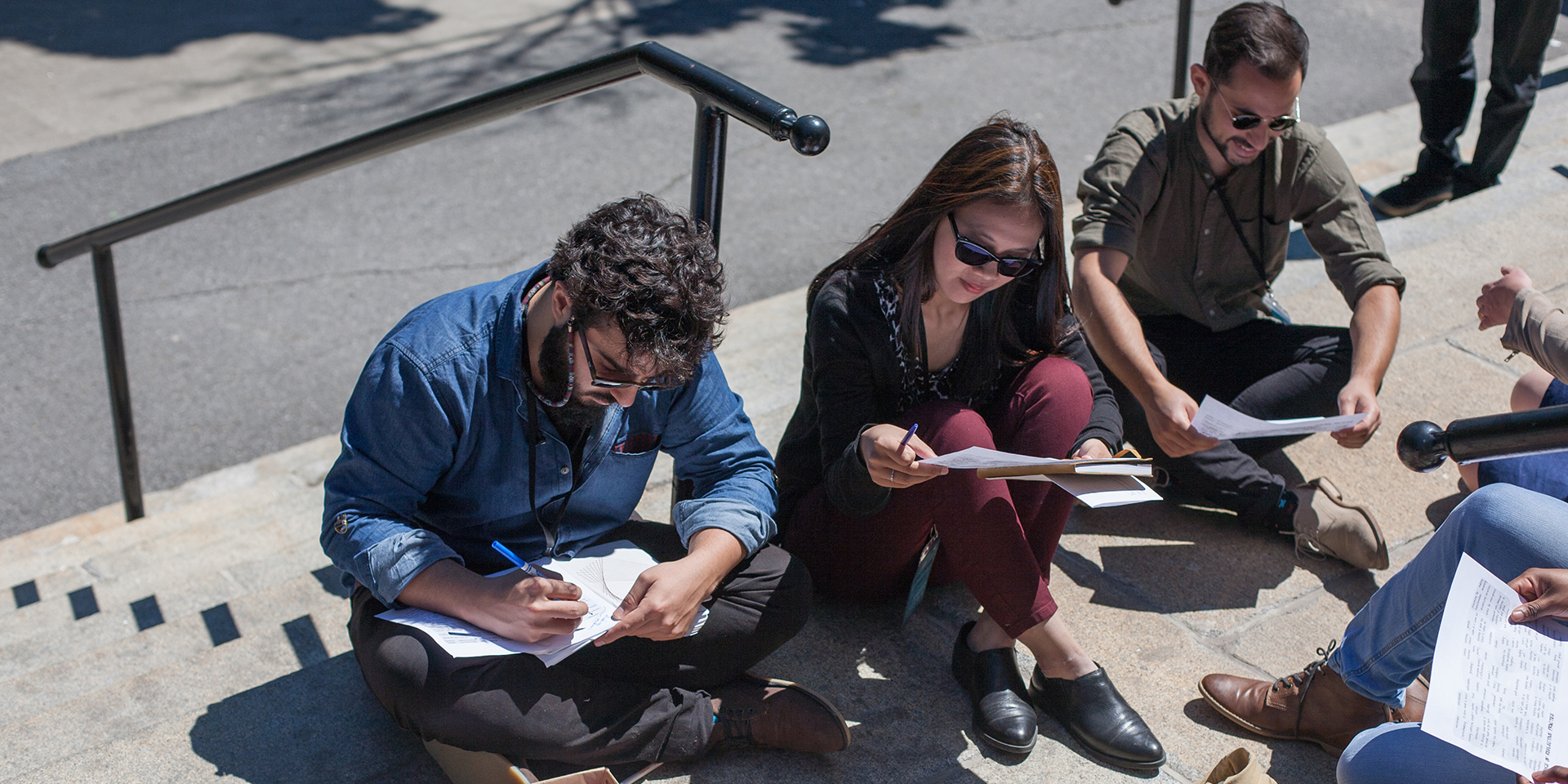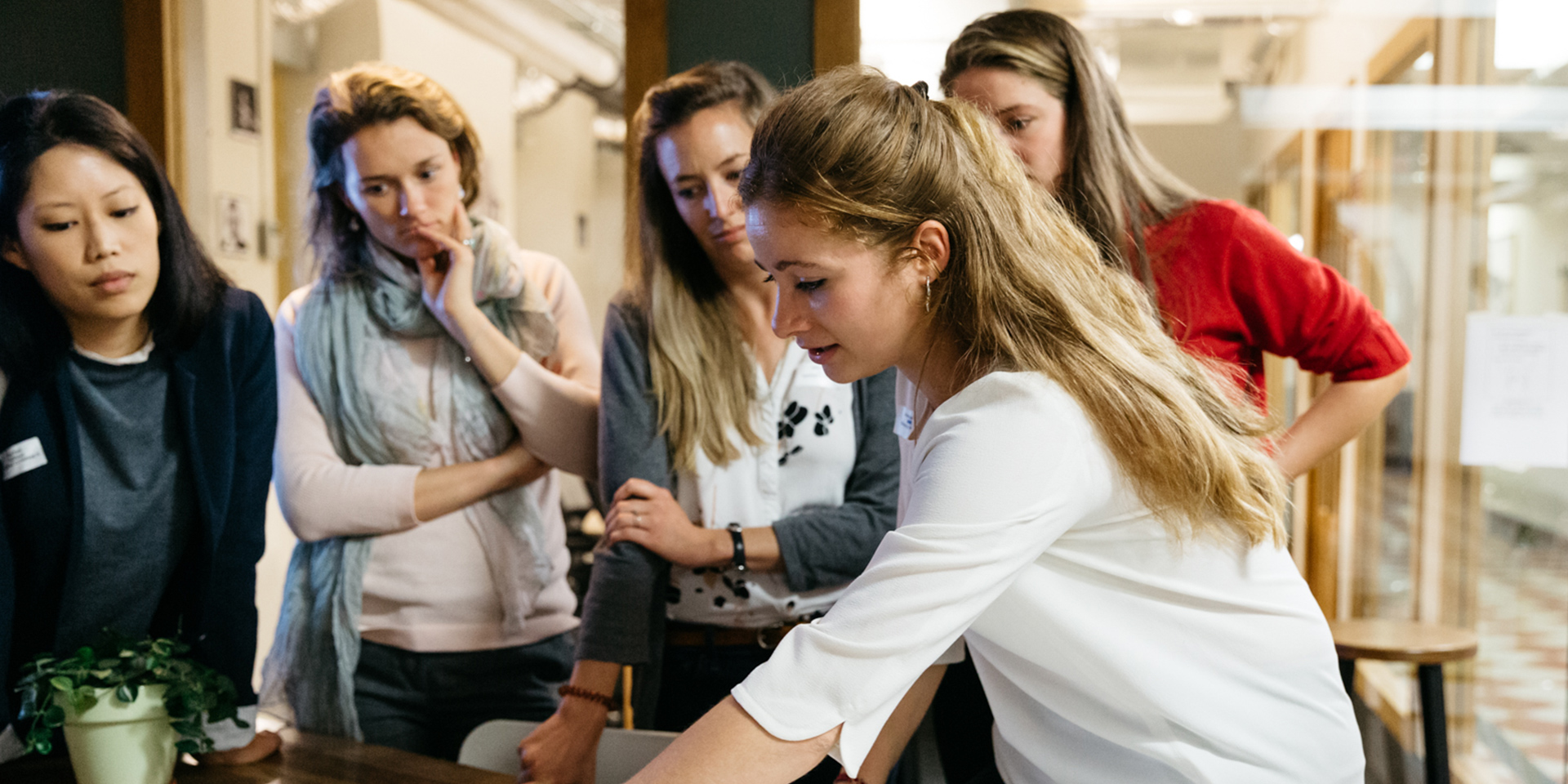Collaboration: The Courage to Step into a Meaningful Mess

Over the past year, we have been working to build what we have come to name a talent collaboracy – a collaboration agency and talent laboratory that brings together and draws on the diverse talents that we find within our community. Why might we be doing this? We are already a Hub – which is by definition the meeting point of multidisciplinary social innovators dedicated to world-changing initiatives. Well, we have found out that while collaboration seems to be the easy answer to most problems, it isn’t a very easy practice. And so we set out to learn more about how it is that we can better serve communities and organisations in creating the conditions for collaboration where it is most needed. We share here the lessons learned from our own experience and reflection.
Collaboration is Supposed to be Messy
If you get more than one person in the room, you have dissonance. We are not saying that harmony is completely absent, but each person is unique with his or her own experience, belief and view on things. Ensuring each voice has a place to be heard and respected can often uncover clashes. Working with others is easy, but really rolling up your sleeves to fight for common achievement even when it means uncovering the ugliness – and examining it – is not. In fact, we have found in the day-to-day work within our familiar social networks that references to collaboration tend towards common colloquialisms for “talking with one another” as opposed to the act of working together or united in labour, which the word’s etymology suggests.
We have also found that people find comfort in pretending we think the same way, and often we gravitate to those who affirm our way of thinking. Perhaps this is because we are eager about the common, world-changing goal we have discovered between us. Yet, the whole raison d’être for collaboration is a requisite diversity. Otherwise, what would spur the reason to collaborate in the first place? We have found that it is just at the threshold of tension where differences surface that we face the possibility – and choice – to enter into curiosity and a common inquiry. That’s when innovation has the potential to emerge from collaboration, and sometimes that means staying in the messiness just a little bit longer.

A Constant Invitation to Stay Connected
As this creative tension builds and coalesces, something has to hold this collective inquiry together. In much the same way that the process is meant to be holistic, it calls for a holistic engagement between people. Participants must work from the core concepts of trust, sharing, belonging and respect to create an interrelatedness that needs constant cultivation and attention, remaining mindful that the person who differs greatest from you is important and requires your engagement, not your ego. One cannot obligate collaboration, but only invite it.
At times the conversation meanders toward humor, recollection and story before returning to the challenge at hand. Do not underestimate these moments as they often bring people into deeper association as equals and colleagues. These moments are the ones that build the social infrastructure of a continuous invitation for people to connect and collaborate. Connection makes it possible for freedom and responsibility to symphonise. “People engage when they can contribute as a full person – not just give a part of themselves.” Engagement is a constant invitation to stay connected.
Protecting and Translating
Two often-invisible roles have become more evident through this work: the protector of space for uncertainty, and the translator of value.
It is easy to doubt when you do not know the outcome but confidently believe you are on the right path. We are so driven to attain results that we often bypass one of the key components of creativity: the ability to question what we think we know. Making room for imagineering and ingenuity means holding back on coming to certainty in favour of holding ambiguity. This makes people nervous and they need assurances that questioning interpretations, paradigms and understanding of what is real and true does not mean throwing out what is real and true. Sometimes we have to be okay with not knowing so that we can move on to something better. Even more so, sometimes we have to allow space for complete questioning of what we have come to accept as reasonable. In seeking entrepreneurs that contribute to progress in our world, the Unreasonable Institute actively pursues and supports “those who are just crazy enough to ignore the skeptics, who remain undeterred by persistent failure, and who, above all, are convinced they can change the world.”
In collaboration-with-purpose, we have found that there can be a leakage of energy in translating: explaining to people not part of the process what is the value of the process. While collaboration seems to be a natural approach for generating new ways forward, the very basis for evaluation is often mired in the system it seeks to leave behind. How can you prove the money spent now leads to more impact? How can you prove this actually makes a difference? Not having acceptable answers to these questions can threaten to kill collaboration before it begins. Value is often intangible but it produces benefits that are concrete and measurable. Collaboration often calls for a “translator” within the group to paint a vivid picture of those measurable outcomes, so that the process and its inherent value can be trusted to transpire into meaningful results. More so, protecting the space for emergent collaboration in the social change field requires translation to funders, stakeholders and board members in a way that communicates multi-fold results, including those more intangible, but also recognises the absence of an alternative trusted system for robust evaluation of collaboration. It’s not always enough that this way just feels better.

Values over Goals?
When a team of people come together, there has to be a motivator, something that keeps the energy and input flowing towards another something. This gives rise to questions as to the focus and reasons for the collaboration and someone proposes a list of goals to keep people on task. However, there arises a problem: sole motivation to meet goals and generate outcomes comes with a sacrifice – deflated creativity. Collaboration is much like the constant movement of ocean waves, ebbing and flowing until it reaches a destination, which is hardly imaginable at inception. A balance between timely suspended productivity and a value-focused conversation lends itself more towards creative and generative work. As ideas flow and get tested, the process moves toward meeting objectives. Cooperation comes when people work to share ideas, whereas collaboration is that magic moment when we take a step beyond individual needs (financial gain, meeting objectives, being part of something, etc.) and co-create from a higher shared value - when you realise “we can’t not do this!” That mandate and sense of ownership nudges the process forward consistently to generate those missing - and new - possibilities that lead to something of a higher outcome collectively.
Current western business practices teach us that success is solely dependent on having goals before us. It is true that there is a place for that when trying to reach a concrete known outcome like weight loss. However, if you want to call forth possibilities from an unknown and not-yet-possible future, the process demands a value- and trust-centred practice. How do we hold just enough tension between process and results, in order to get to a point in the process where new results are possible? How do you get to a level of consciousness that working with the other isn’t more work, but improves the quality of the work? It is hard to have a value conversation, with others who think they have different values.
Courage for Collaboration
How do you make sure you are not just cooperating with each other but really collaborating? It seems that the best way we can face the complexity of the challenges in this day and age is through non-linear and collective responses; but ones that are effective and efficient. Do we have the patience – with ourselves and each other – for a group to get to know itself and come up to speed in a way of collaborative working that it can be agile and responsive to the needs of the world?
In some places and cultures, collaboration is not just a belief but more a way of being. Where it is about not getting in the way of what wants to arise. In our talent collaboracy, we invite the diversity of talents – designers, ethical fashion advocates, conscious chefs, new media entrepreneurs, community-builders, ecological architects – to co-create new responses to the problems we have in the world. Our way of being is to widen the potential responses to the problems that emerged from silo- thinking in the first place and to see together from the centre of community something that none of us can see alone. Let us have a quality of exchange that makes working together worth it – and make it work. It takes courage to be in relationship with each other through the challenges, and it is just when we are ‘stepping into the fire’ together that we move from collaboration as needing each other to collaboration as an authentic promise to each other to host the emerging future.
It’s time to find each other in discomfort with the status quo. Let us remember that the system that got us here is broken. Could inviting into our organisations and systems a little human messiness – with its open questions, creative tension, and diversity of talents – perhaps offer a hopeful start?
Co-authored by
Tatiana Glad is a change strategist, a sustainability practitioner and a social entrepreneur. Combining experience in business and in civil society, Tatiana’s work is in hosting change agent communities in organisations, designing programmes for collaborative leadership, facilitating multi-stakeholder interventions, and designing learning journeys on societal issues. She is a partner in Engage! Interact and co-founder of the Impact Hub the Netherlands.
Alycia Lee has over fifteen years of international experience in strategic collaborative facilitation and implementation within corporate, government and charitable organisations. Her personal vision in a nutshell: to equip people to celebrate each others unique contribution to the world. She formed Instigation to match disadvantaged communities and their leaders with global leaders to create products, services and answers to difficult challenges. In addition to her company Alycia is an active member in the Hub Amsterdam community.
With a special thank you to Bob Stilger of New Stories, and former Board member Berkana Institute, as a reflection partner